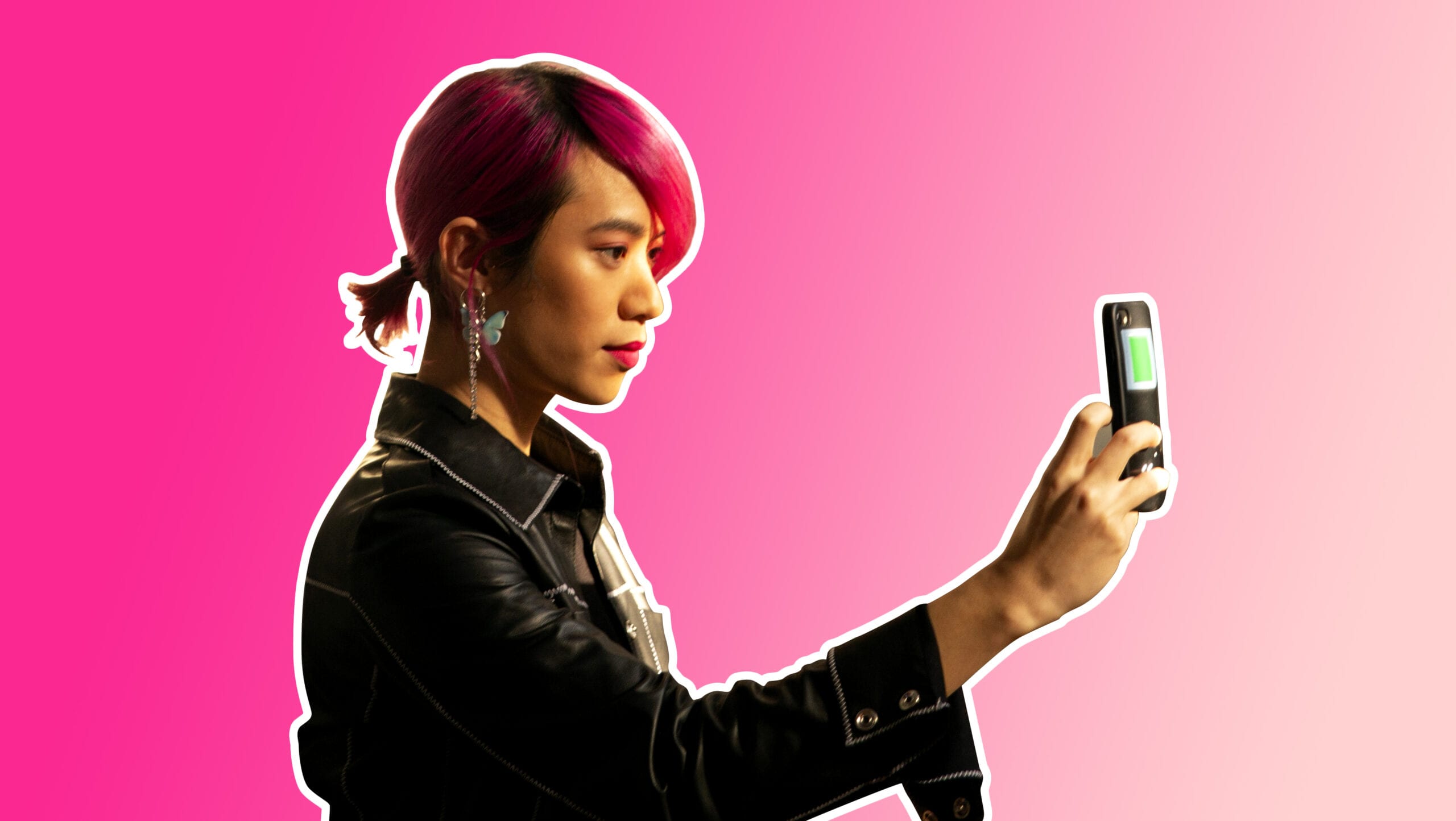It’s only reasonable for women to seek online spaces that are intentionally designed for women, without the threat of men. After all, research shows that those who have spent any time online as a woman (or as not a man) have likely experienced some kind of invasive or outright threatening treatment. And while statistics suggest that men and women experience relatively equal levels of online harassment, women tend to experience harassment on a more sustained basis with greater offline impact (including threats and the leaking of personal information)—usually at the hands of men.
Sure, in 2020 “online harassment”—or the even more esoteric “cyberbullying”—is a bit of an empty signifier. The U.S. president has openly threatened other countries with war on his Twitter account, for god’s sake. And yet, the common refrain that we could just “log off” is as inane as it is accurate. Who really logs off anymore (insofar as such a thing is really possible, least of all for those of who make our livings online)? And in many cases, what we call “online harassment” rarely ends there; when women’s addresses and personal information are leaked online, it often results in physical attacks and ongoing intimidation. The men who hate women online hate us offline as well—and occasionally they act on it, sometimes with deadly consequences.
In light of all this, women-only spaces, both online and offline, feel more necessary than ever. Enter “Giggle,” a new app that promises to “safely and securely [connect] you with girls who share similar interests.”
I came across Giggle in February and was immediately charmed by the concept. If I could go a whole day without dealing with men, who knows how much I could get done, how much lighter and brighter my world might be! But my excitement was short-lived when I read about the site’s claim of total security. Supposedly, it managed to ensure a girls-only safe space through something called “biometric gender verification software.”
“In biometric systems,” reads the Giggle FAQ page, “the goal of liveness testing is to determine if the biometric being captured is an actual measurement from the authorised, live person who is present at the time of capture. This involves taking a selfie and the gender recognition software produces a result. This process is closely monitored by real girls. Bio-science, not pseudo-science like phrenology, is behind this process.”
In other words, you take a selfie and the app runs a quick test (through unseen means) to determine your gender based on the biological clues gathered thereby. According to Giggle, though, trans women unfortunately might not make the cut. The site therefore urges trans girls to contact app support in order to circumvent the gender verification process—a compromise which, I was assured by Giggle’s founder Sall Grover, came out of ongoing consultations with trans and cis girls on the Giggle team.
When I first read about Giggle, I took a screenshot and posted it on Twitter. (At the time, the site had slightly different copy than the new, edited version quoted in this article). People reacted swiftly to what felt like a flurry of transmisogynistic dog whistles, accusing the app and its creators of peddling in phrenology, pseudoscience and outdated, racist assumptions about biological sex. Giggle disagreed: “Giggle both fully supports and recognises gender identity and will never discriminate,” its FAQ page continues. “Gender identity,” they promise, was a “separate issue” from such scientific, biometric, flesh-and-bone realities as maleness or femaleness.
“I downloaded Giggle and followed all of the app’s prompts hoping that I wouldn’t need to contact support, that I could somehow pass well enough to pass the test. I tried four times to “verify” my gender. I couldn’t be verified”
I’ve written before about the inherent problems in ascribing gender to matters of blood, brain or bone. To emphasize some intrinsic, biological difference between men and women erases the true complexity and diversity of human physiology, and risks naturalizing gender roles that are primarily social or cultural artifacts. Theorists like Hortense Spillers and C. Riley Snorton have also described how colonial systems, such as slavery, brought about the very idea of biological sex and gender, in large part as a way of concretizing an ideology of racial difference and subjugation. Anthropologists have called into question the very notion of gender as something fixed and stable across cultures, let alone as something traceable through bodies and bones. Others have critiqued how such constructs enable and enforce oppressive ideas about size, sex, race and ability that inevitably work to exclude disabled, non-white, fat and queer women, whether cis or trans. Unpacking this relationship was and is one of the key interventions of Black and lesbian feminism—a fact which ought not be forgotten, no matter the diligence of cisgender white women in serially misusing those same Black and lesbian thinkers’ terms and theories. And I know well enough that the baselines of “female” anatomy that are bound up in so-called biometric software are often based upon similarly Eurocentric standards.
I know all this. And yet, I had to see for myself. I downloaded Giggle and followed all of the app’s prompts hoping that I wouldn’t need to contact support, that I could somehow pass well enough to pass the test. I tried four times to “verify” my gender. I couldn’t be verified.
The week I stumbled upon Giggle was, coincidentally, the same week that I launched a crowdfunding campaign to pay for electrolysis, allowing me to (one day) do away with my dysphoria-inducing facial hair. But in my heart, I knew that even this would only be a temporary solution. The problem was more than just skin-deep. I’ve been on hormones for more than a year and a half, and in that time I’ve experienced a lot of changes, both emotional and physical. I feel more myself now than I could ever have imagined. And yet, the bones don’t lie.
Dysphoria, in a clinical sense, is a diagnosis of desire—a nonsensical, irrational want that must be laid bare again and again. But such a demonstration is something of a necessity in order to prove oneself trans enough—or man enough, or woman enough (the model hasn’t really caught up too well to the spaces between those categories)—in order to qualify for care, or social services or entrance to these so-called women’s spaces. It is step one in a constantly unfolding process of hoops and hurdles through which, supposedly, I become a “woman” in the eyes of whomever I’m trying to convince—an authority whose power is, in turn, bestowed upon them by the scientific “truth” of gender.
“‘Gender identity’ is another matter from the bones in my face, which remain ‘scientifically’ male despite all my best efforts to the contrary”
This is called gatekeeping, a term that might mean something different to me than it does to readers who’ve never attempted to change genders before. To clear the stages involved in such a process, you must subject yourself to the unquestionable authority of a stranger with a clipboard. You must prostrate yourself to each gatekeeper you meet—whether it’s a general practitioner, a psychiatrist, an endocrinologist, a government clerk, a medical receptionist, a human resources professional, the person doing intake at a homeless shelter. There are endless gatekeepers, all of whom have different standards and all of which are, somehow, “scientific.” At every stage, you must sufficiently demonstrate the correct balance of neediness, gender normativity and mental stability to be deemed fit for care, suitable for inclusion, safe to work with, by the person with a clipboard in front of you.
Gatekeepers invoke their own definitions of what a transgender person, or a man or a woman, really are, and we must simply adjust. In Toronto in the 1990s, for example, trans women couldn’t enter most women’s shelters if they hadn’t had gender confirmation surgery; according to those gatekeepers, that’s what “made” a woman. In many jurisdictions, you can’t get a referral for hormones unless you manage to prove yourself simultaneously mentally well and incurably depressed due to gender dysphoria. I could log onto Twitter right now and, depending on which troll I ask, might find my gender made or unmade by anything from my chromosomes, to my genitals, to my socialization or all the above. Random trolls might not have the power to cut off services but their ideas have audiences, and those audiences include potential editors, coworkers and employers—all of whom are empowered to treat me however they want with those standards in mind.
Gatekeeping is a stupid, ugly, degrading process that is nevertheless a reliably consistent characteristic of transgender life, made even worse by the obvious dissonance of having arbitrary hurdles all presented as scientifically immovable. But what can I do? Facts, famously, don’t care about my feelings. “Gender identity” is another matter from the bones in my face, which remain “scientifically” male despite all my best efforts to the contrary. Ironically, that app and its selfie-based biometric software have managed to stump me where other gatekeepers have failed. And even to attempt to work around it by contacting support felt like a poor substitute, another hurdle to clear, an admission of defeat—or, worse, of maleness biometrically proven.
There’s no argument I can make in favour of myself. All “scientific” arguments to attest to my gender—hidden as it may be beneath the bones of my face—are designed to fail me here; the gate, silly as it is, is shut. So I can tell myself that there’s no such thing as biometric gender verification software and that there’s no real scientific basis for gender, sex or gender identity, beyond the arbitrary constructs created by white men with clipboards to keep women down. I can remind myself that my face is not a “male” face, my skull is not a “male” skull and that the idea of a “male” or “female” skull is fundamentally ridiculous, as are all of the claims to scientific authority that justify these and other unjustifiable acts of petty, transphobic gatekeeping. I can tell myself all of this, and I would be right. And I know it. But I also know that even this won’t change my wanting. In that moment, I wanted so badly for that app to verify me. Women’s spaces are where I belong—at least in theory. But in practice, I am an outsider everywhere.
What can I say? “Science” be damned. I want to be a woman. My want is as deep and irrational as the sky. It lives beyond me. It refuses to be reasoned with. I would do anything for it. I would change my face. I would change my skull.


 Why you can trust Xtra
Why you can trust Xtra


